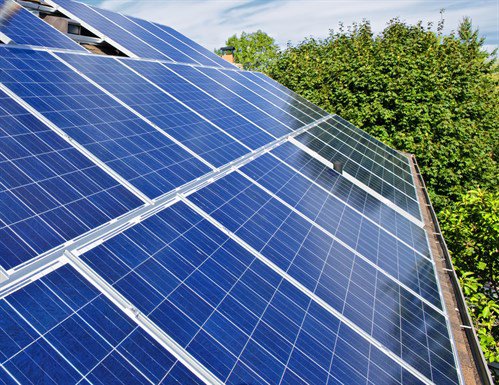What’s Next for Solar Generation?
How Solar+Battery Could Help Meet Peak Loads in the Northwest
- May 16, 2019
- Steven Simmons

Homes and businesses in the Northwest have been installing and operating rooftop photovoltaic systems for years now. The equipment and installation costs for these systems continue to decline, making them even more attractive for consumers who want to generate their own onsite clean electricity—referred to as behind the meter solar.
But, a PV system alone can only generate electricity while the sun is up. Now a home or business can install a solar+battery system and store electricity to use later during the nighttime or during periods of high and costly demand. These systems are on the expensive side now, but the costs for home battery storage are declining, and several manufacturers--Tesla Powerwall, Sonnen ecoLinx, and LG Chem RESU--offer battery storage systems that can be paired with PV panels.
A consumer might purchase a battery system to pair with their PV system to provide backup power or to lower their retail electricity bill. But, what might happen in the coming decades if solar+battery systems are installed across the Northwest and used to enhance over-all grid operations? For example, these systems could be used to reduce expensive-to-serve peak loads that occur early in the morning or in the evening.
The Council closely tracks trends in energy advances and consumer use to improve its long-term load forecast, which is used in the Council’s regional power plan, currently under development. In our planning, we developed a model simulation to gauge the impact of aggregating installations of behind-the-meter solar+battery systems to smooth out the regional electricity load and, as a result, reduce peaks.
The results were interesting. For instance, on a typical spring day, the regional peak load might occur at around 8 a.m. and another slightly lower peak might occur around 8 p.m. In this case, the grid charges the battery in the very early morning hours when load is low and then dispatches electricity at the 8 a.m. hour to smooth out the morning peak. Once the sun is up and the PV system is generating, some of the electricity is diverted to the battery to be stored and used later that night during the 8 p.m. peak. The overall daily system load shape is flattened, which makes it easier to serve. A few other observations from the simulation:
- In some situations, adding battery storage can provide nearly four times the peak load reduction when compared to solar alone
- The amount of peak load reduction varies from month-to-month, but the greatest benefit from adding batteries to solar occurs in the winter and spring months when there is an early morning and/or later evening peak
- In the summer when the sun shines longer, PV systems can produce electricity late in the day and early evening to meet peak demand, relying less on the battery storage
The National Renewable Energy Laboratory has more information on solar+battery systems and costs
The Council’s White Paper on the Value of Energy Storage to the Future Power System



